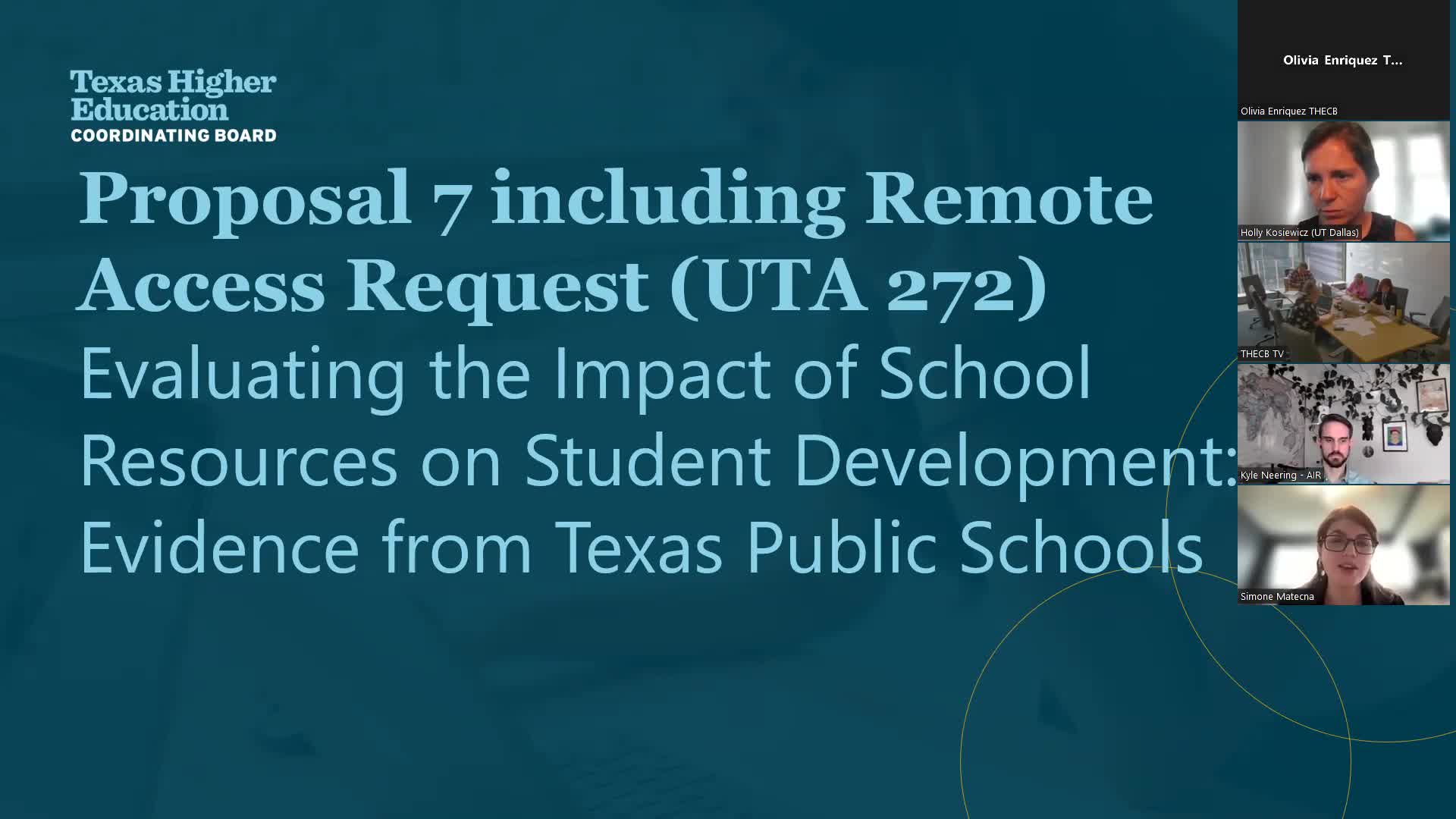Research Team Links Texas School Health Investments to Student Outcomes
August 14, 2025 | Higher Education Coordinating Board (THECB), Departments and Agencies, Executive, Texas
Thanks to Scribe from Workplace AI , all articles about Texas are free for you to enjoy throughout 2025!

This article was created by AI using a video recording of the meeting. It summarizes the key points discussed, but for full details and context, please refer to the video of the full meeting. Link to Full Meeting
The project seeks to link detailed individual data from the Education Research Center (ERC) with Medicaid health records, leveraging resources from the National Bureau of Economic Research. This innovative approach will allow researchers to compare outcomes in schools that either gain or lose health services, such as the presence of a school nurse, against similar institutions that do not experience these changes. The goal is to produce causal evidence demonstrating how school-based health investments can significantly influence critical life outcomes, including eligibility for programs like Social Security Income.
The implications of this research are profound, especially in light of recent legislative efforts in Texas to mandate the presence of school nurses. With rising healthcare costs and a national trend toward reducing state financing for Medicaid, understanding the value of these health resources is more crucial than ever for policymakers. The project aims to provide state-specific evidence on the effectiveness of investments in on-site health services, which could guide future funding and policy decisions.
Moreover, the research will consider various factors, including the impact of the Workforce Innovation and Opportunity Act, which supports training programs for nurses, and the Elementary and Secondary School Emergency Relief Funds allocated during the pandemic. By examining which health services yield the best outcomes for diverse student populations, the project promises to shed light on the essential role schools play as access points for health and social services—a lesson underscored during the COVID-19 pandemic.
As the meeting concluded, the researchers expressed optimism about the potential findings and their relevance to Texas's educational landscape. With questions from board members indicating a keen interest in the project, the stage is set for a deeper exploration of how health investments can transform the lives of Texas students and the broader community.
Converted from Special Called ERC AB Meeting 8/14/25 - Part 2 meeting on August 14, 2025
Link to Full Meeting
Comments
View full meeting
This article is based on a recent meeting—watch the full video and explore the complete transcript for deeper insights into the discussion.
View full meeting
